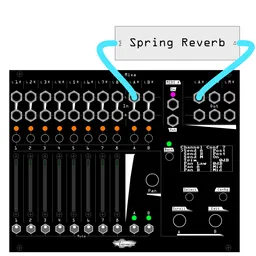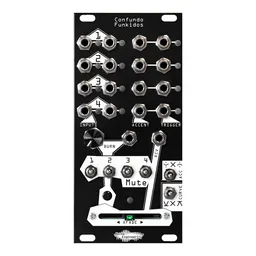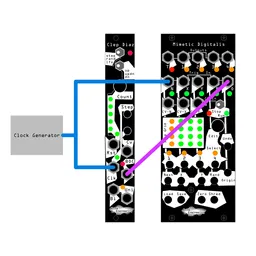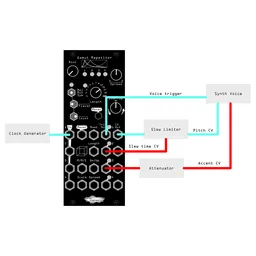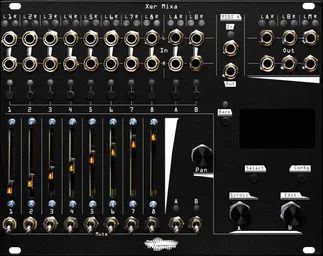Xer Mixa was designed with stereo mixing in mind. With 10 pairs of stereo inputs and three pairs of stereo outputs, it’s very comfortable with stereo sources and effects.
But what if we want to use a mono effect on one of the aux loops?
The problem
There are a lot of wonderful effects that are mono. Spring reverbs, traditional delays, dynamics processors, and countless other common effects are wonderful in an aux loop, but also happen to be mono.
Xer Mixa’s channel inputs normal the left input to the right, so any mono source will fit into the mix no problem. However, the bus outputs (aka sends) are stereo. This means that if we patch just the left output to our mono effect, then changing the pan on any channels that are sent to the effect will also change the send level.

The settings
When we were developing Xer Mixa, we wanted to accommodate mixes that had lots of mono sources and effects, while still making use of the extensive panning capabilities of each channel. In the channel configuration menu, you’ll notice the Pan A and Pan B settings. By default, both of these settings will be set to Track, meaning the bus output follows the pan setting of the channel. However, the additional settings allow for us to avoid any unwanted send level changes. The Left and Right settings will only output on the left or right outputs of the bus, and the Mid setting locks the pan to the center.
These settings only affect their respective bus outputs: if you set Pan A to Left and Pan B to Track, you’ll still hear your input move around the stereo field on both the main output and the bus B output, but the level of the left A output won’t change. This means that you’ll have a consistent send level, even if you hard pan a channel left, or modulate its pan position with CV.

In use
I frequently mix a number of mono drum sources with Xer Mixa, and I like to spread them out over the stereo field to create a full mix. I’m also a big fan of parallel processing, and sometimes use an SSF Autodyne and a highpass filter on one of the aux loops to add some punch to my drum mix. The individual pan settings let me keep my wide stereo mix, while also providing a way to easily parallel process my drum bus without constantly tweaking my levels.
